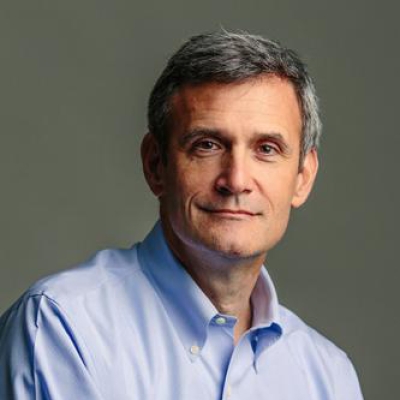Every sentence in Sir Ken Robinson’s Creative Schools begins with a capital letter. There is also a punctuation mark at the end of each, without exception. I have made a careful study of his nearly three-hundred-page manuscript, and can now report conclusively that its author employs—precisely and exclusively—the twenty-six letters of the standard English alphabet.
Normally, this would not be worth remarking upon. Most of us have come to expect standard English in books written for general readers. But most of us are not Sir Ken Robinson, Ph.D. He is “one of the elite thinkers on creativity and education,” whose TED talk on how schools kill creativity in children is “the most watched in TED history.” Sir Ken intensely dislikes standardization in all its forms. So it is at least somewhat disappointing that he has chosen to eschew interpretive dance, semaphore flags, or other means to argue against standards and for creativity in education.
It is not uncommon for education gurus to lack the courage of their convictions. So allow me to be creative on Sir Ken’s behalf: Don’t think of Creative Schools as a book; think of it as a jukebox cranking out all of the anti-reform hits. Nod your head like, yeah, as Sir Ken critiques not just standards, but competition, corporatization, back-to-basics, “industrial model education,” and, inevitably, the school-to-prison pipeline.
Original and creative, Sir Ken is not. See if you can answer this fill-in-the-blank question without even cracking the cover of Creative Schools: “The story in [which country] could hardly be more different,” Robinson writes.
The correct answer is:
a) Finland.
b) Obviously Finland.
c) Of course it’s Finland! It’s a freakin’ Sir Ken Robinson book!
d) All of the above.
He is also deeply self-referential. I started to count, then quickly lost track of, the number of times Sir Ken referred to his own work (“In 2006, I gave a talk at the TED conference in California…”; “In my book Out of Our Minds, I quoted…”; “If you’ve read my book The Element…”). I stand corrected—Creative Schools isn’t a jukebox, it’s a greatest hits album.
To be fair, there is not a complete lack of inventiveness in Sir Ken’s prose. Some of his criticisms seem to have sprung entirely from his imagination. “In terms of knowledge, the standards movement favors direct instruction of factual information and skills and whole class teaching rather than group activities,” he writes. He’s inadvertently revealing that he lacks even a passing familiarity with the standards movement and hasn’t spent very much time lately in schools, where teachers are expected to “differentiate instruction” at all times, and students sit in pods…because group work.
Sir Ken’s oeuvre is well-intentioned, but it is almost entirely nonsense—a warmed-over Rousseauian fantasy suggesting all children are “natural born learners,” defying what cognitive science tells us about how knowledge and practice drive skill and competence. It is also much easier to divine what Sir Ken dislikes about schools than what he proposes we should do about it. At several points, he compares education to organic farming. “Plants grow themselves,” he writes. “The job of the gardener is to create the best conditions for that to happen. Good gardeners create those conditions, and poor ones don’t.” I defy you to read that last sentence out loud and not think of Peter Seller’s Chance in Being There.
“One of the declared aims of public education is to provide all students, whatever their backgrounds and circumstances, with opportunities to prosper and succeed and to become active and engaged citizens,” Robinson notes early on in Creative Schools, before failing utterly to follow this idea where it leads.
Here’s where it leads: Let’s be done, once and for all, with the idea that standards and curricula are somehow anathema to education. They are the point. From time immemorial, schools have existed to transmit—consciously and unconsciously—the language, knowledge, and values of their societies at any given time and place. The trouble is, they have done so splendidly for those who are the historical heirs and beneficiaries of that language and knowledge—people like Sir Ken Robinson, Ph.D.—who are stewed in its conventions and have the luxury of thinking creatively about schooling. For those on the outside looking in—whose very existence seems lost upon Sir Ken—it’s not quite the same.
SOURCE: Ken Robinson, Creative Schools: The Grassroots Revolution That’s Transforming Education (New York: Viking, 2015).
